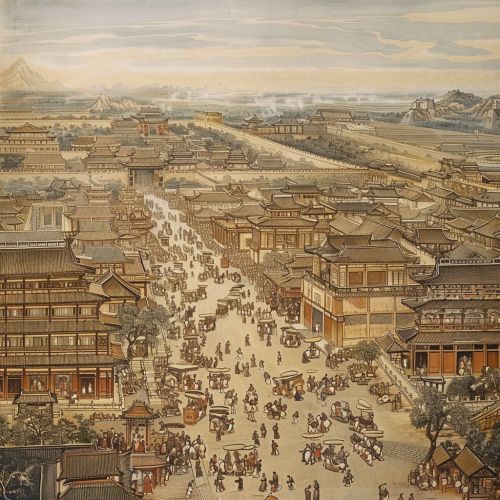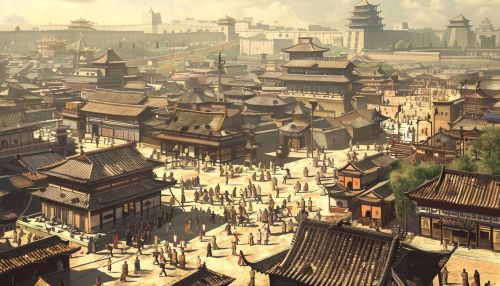Tang Dynasty
Introduction
The Tang Dynasty was a Chinese dynasty that ruled from 618 to 907, succeeding the Sui Dynasty and preceding the Five Dynasties and Ten Kingdoms period. It is generally regarded as a high point in Chinese civilization, a golden age of cosmopolitan culture. Its territory, acquired through the military campaigns of its early rulers, was greater than that of the Han period.
History
Founding of the Dynasty
The Tang Dynasty was founded by Li Yuan, Duke of Tang, who was the governor of Taiyuan during the Sui Dynasty's collapse. He seized the throne in 618, establishing a dynasty that would last for nearly three centuries.
Reign of Emperor Taizong
Li Yuan was succeeded by his son, Emperor Taizong, who is considered one of the greatest emperors in Chinese history. His reign saw the consolidation of Tang power, the development of a highly efficient bureaucracy, and the implementation of a legal code that would serve as the model for later codes in China and other East Asian states.
An Lushan Rebellion
The Tang Dynasty faced a significant challenge in the form of the An Lushan Rebellion (755-763). This rebellion, led by a disgruntled general, resulted in a significant loss of life and territory, and marked the beginning of the dynasty's decline.
Culture
The Tang Dynasty is often referred to as the "Golden Age" of Chinese culture. This period saw the flourishing of literature, art, music, and dance. The imperial court was a hub of cultural activity, attracting scholars, artists, and poets from across the empire.
Literature
Tang literature, particularly poetry, is considered some of the finest in Chinese history. Poets such as Li Bai and Du Fu are still celebrated today for their contributions to Chinese literature.
Art
Tang art is characterized by its realism and attention to detail. This period saw the development of landscape painting, with artists such as Zhang Xuan and Wang Wei leading the way.
Economy
The Tang Dynasty saw significant economic development, with the growth of commerce and the expansion of the Silk Road trade network. The use of paper money was introduced during this period, and the city of Chang'an became one of the largest and wealthiest in the world.
Decline and Fall
The decline of the Tang Dynasty began in the late 8th century, following the An Lushan Rebellion. The dynasty was further weakened by internal strife, economic difficulties, and the increasing power of warlords. The Tang Dynasty officially ended in 907, marking the beginning of the Five Dynasties and Ten Kingdoms period.


